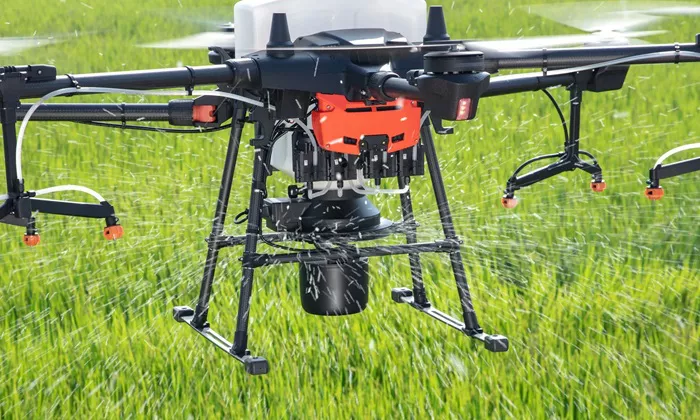At the 2025 Western Canadian Crop Production Show, Tom Wolf, a research specialist at Agrimetrix, presented groundbreaking findings on the use of spray drones in agriculture. His presentation, held at the Nufarm Information Theater, highlighted ongoing research into the effective application of spray drones, despite their current legal restrictions for chemical use in Canada.
Wolf emphasized the critical role of flight altitude and speed in achieving optimal spraying results. According to his research, drones should ideally fly about 3 meters above the ground. The optimal speed, however, varies depending on the desired amount of product deposition, similar to traditional boom sprayers. During their studies, Wolf and his team tested drone speeds ranging from 4 to 18 mph.
One key challenge with spray drones is their pronounced downwash—the downward airflow created by the drone’s rotors. Unlike manned aircraft, drones generate a stronger downwash due to their slower speeds. While this downwash helps deliver products through the plant canopy to the ground, it also increases the risk of drift and uneven distribution.
“In the middle of the drone’s flight path, you’ll see heavy deposits, but at the edges, the coverage becomes lighter,” Wolf explained. “The challenge is determining where the coverage becomes too light and how much overlap is needed to ensure consistency.”
Wolf identified swath pattern scanning and overlap management as the most significant hurdles in drone spraying. “Current patterns aren’t as uniform as we’d like,” he said. “Factors like flight speed, downwash, and design features need further refinement to avoid creating new problems.”
While spray drones hold immense potential for precision agriculture, Wolf acknowledged that significant work remains to optimize their performance and ensure safe, effective use. His research underscores the importance of continued innovation in this emerging field.
The presentation concluded with a call for further collaboration and experimentation to address these challenges, paving the way for the future integration of spray drones into Canadian agriculture.

